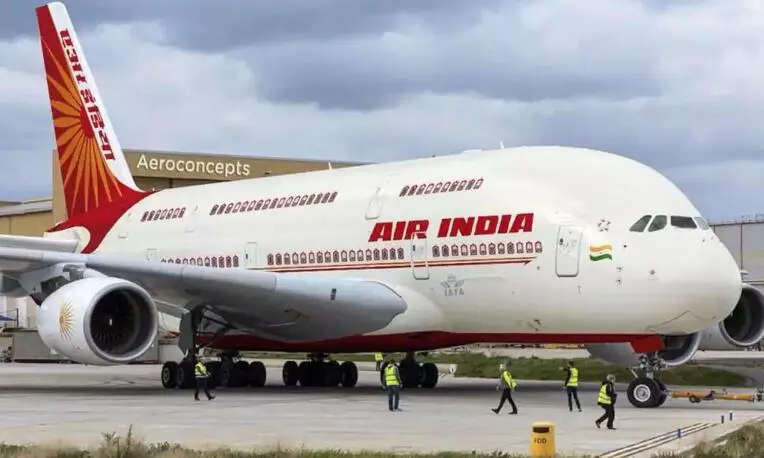Air India firms up its consolidation and future growth blueprint
The Tata Group’s plans to merge Vistara with Air India and Air Asia India with Air India Express to eventually have one full-service carrier Air India and a low-cost carrier, Air India Express.
image for illustrative purpose

The Tata Group’s plans to merge Vistara with Air India and Air Asia India with Air India Express to eventually have one full-service carrier Air India and a low-cost carrier, Air India Express. Towards aching this there is a need to rationalise the network of the group. They have to plan it in such a precise, and refined, manner that operations of one subsidiary do not clash with another on routes where it has a stronghold. The low-cost Air India Express is known to especially cater to price-sensitive air travellers. The airline, along with Air India, AIX Connect and Vistara, operates under the umbrella of Air India group, headed by Tatas. The airline is expected to add 170 narrow-body aircraft to its fleet to cater to domestic and short-haul international markets. Air India is looking to induct about 50 modern, fuel-efficient Boeing 737-8 aircraft into its fleet over the next 15 months. Air India Express plans to boost its footprint in both the domestic market and in the Middle East and Southeast Asia, the latter by the introduction of new services in South Asia and the CIS region. The focus of Air India Express will be on routes with a higher component of leisure travellers and of price-sensitive customers.
Air India will primarily concentrate on routes that are higher yielding and require business class and a higher level of in-flight services.
Air India Express network will be planned in such a way that it reaches places where Air India does not fly. It will not operate on popular routes like Delhi-Mumbai, which has higher yield customers, and is served well by Air India. By doing so, Air India Express will not be losing out on major markets and passengers, as it has a code share agreement with Air India. The two airlines will operate in symphony so as to cater to the needs of international travellers heading to destinations like tier-2 or tier-3 cities.
The difficult part of the Air India Express-AIX Connect (formerly Air Asia India) was the integration of back-end platforms, processes and manuals, which has been duly accomplished. A legal process is underway and it will tentatively be completed by March-end, affirms a top official.
The airline is not planning to expand its operation all over India. Its first priority is in consolidating its presence, which it hopes to achieve by concentrating on routes it may enjoy an advantage or on routes it may get feeds from Air India that could swell its occupancy rates. Along with consolidation, the airline is also moving ahead with its transformation agenda with certain targets.
Its future plans include a market share of about 20 per cent on the short-haul, international and 15 per cent on domestic.
The profitability of an airline involves many aspects like product, network and scale. If the operations are sub-scale, it will be difficult to make profits, especially in a hyper-competitive market like India.

